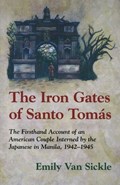A gripping memoir documenting one couple’s experience being imprisoned by the Japanese on a Philippine college campus during World War II.
This is a gripping eyewitness account of internment during World War II in the Philippines. Van Sickle and her husband, Charles, were among a group of foreigners who found themselves in the wrong place at the wrong time. Trapped in Manila after its surrender to the Japanese in 1942, they were incarcerated in the vast forty-eight-acre campus of Santo Tomás University, the only place in the city large enough to accommodate all the prisoners. The university grounds were enclosed on three sides by high concrete walls and iron bars; Santo Tomás turned out to be “a made-to-order concentration camp.” Every day spent on this seventeenth-century campus was a struggle for survival.
Van Sickle offers a fascinating, detailed, and insightful account of life at Santo Tomás. The prisoners—5,000 at the outset—were thrown on their own resources for food and the simplest types of comfort. The internment camp became a kind of school of human relations: additional curricula forced upon the prisoners, the author says good-humoredly, were Entomology, the science of bed bugs; Structural Engineering, the art of sleeping on a cot; Chemistry, or washing clothes; Philosophy, or waiting in line; Industrial Engineering, opening a can; Physical Education, or the missing drink. As they suffered together, the internees managed to form a community of sorts that sustained them until their liberation in February, 1945.
Van Sickle’s story is unique and personal narrative, and her retelling of the camp’s liberation is dramatic and powerful.
Praise for The Iron Gates of Santo Tomas
“Involving memoir of a woman caught with her husband behind enemy lines after the fall of Manila in WW II. . . . A valuable addition to the history of WW II.” —Kirkus Reviews
“The story is unique and fascinating to read. . . . A well-written memoir.” —Library Journal

